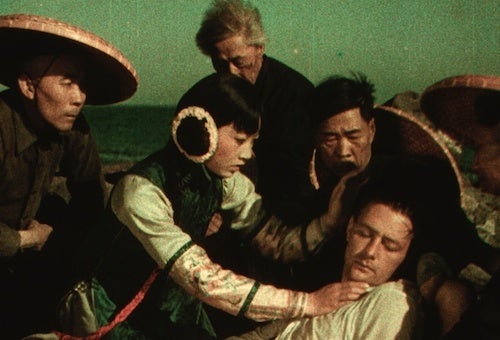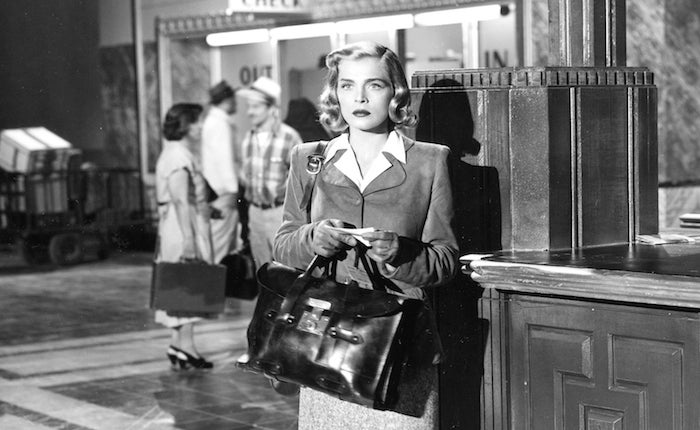
The Toll of the Sea (1922)
I arrived at Tokyo Narita Airport on October 27 and was picked up by Ms. Usui Chizuru, an assistant curator at the National Film Center of the National Museum of Modern Art, Tokyo. After an almost two-hour train ride, we arrived at the Film Center, where a retrospective of UCLA Film & Television Archive restorations, co-sponsored by the Tokyo International Film Festival, was already underway. It was my first trip to Japan since 1993, when I had presented a program of “Unknown American Films” from George Eastman Museum at the invitation of the Film Center’s then-director, Mr. Oba, although my actual host for much of that visit was Okajima Hisashi, who is now chief curator. I had two days to recover from the 14-hour time difference, before I would have to lecture on “Film Preservation in the Age of Digitality.”
But the planning for the program took five months. It was back in May that Ms. Tomita Mika, the Center’s curator contacted UCLA at the behest of Hisashi-san, who has been a good friend and colleague in FIAF (International Federation of Film Archives). They had initially selected a program of 10 films from our UCLA Festival of Preservation, including The Toll of the Sea (1922), Becky Sharp (1935), My Darling Clementine (1946), Seven Men from Now (1956), and Come Back to the 5 & Dime, Jimmy Dean, Jimmy Dean (1982). UCLA motion picture archivist Todd Wiener also suggested some newer noirs we recently restored, including Too Late for Tears (1949) and Try and Get Me (1951). Mika’s list thus expanded to 16 titles, although we knew that some titles would probably drop out, due to rights issues.
Usui Chizuru and Masai Daibo in the National Film Center vaults
Clearing the rights became a major hurdle, because we knew that the North American rights holders were not necessarily the same as the rights holders in Japan. So, the first thing we sent them was a list of our rights holders. We also had to pull a number of titles, because prints were not available for the time period requested or prints turned out to be damaged. UCLA assistant motion picture archivist Steven Hill therefore suggested Force of Evil (1948), Caught (1949), Mickey One (1965) and Matewan (1987) as substitutions. With the addition of The Connection (1961), the program was finally set and the rights were cleared by September. Meanwhile, our communications manager Kelly Graml wrote an article on the Archive for the festival catalog and Film Center staff began translating dialogue for subtitling, once they received the first group of prints.
National Film Center vaults
By the time I got to Tokyo, the program had been running for a couple days, and I was greeted with compliments; Film Center staff marveled at the excellent photographic quality of the Archive’s 35mm prints, noting that they often received DCPs and worn out prints. In fact, the viability of 35mm projection became one of the major topics of discussion during my visit, especially when I took a train out to the National Film Center vaults, where I was given an amazing tour by Ms. Usui and Dr. Masai Daibo. The Film Center recently opened new safety and nitrate vaults, which met modern climate control standards for film storage. Coincidentally, Professor Ayako Saito, who I had met in Japan two decades ago and who had audited my film noir course at UCLA, was teaching a film class at the Center. Back in Tokyo, I also enjoyed seeing the Film Center’s informative exhibit on the history of Japanese cinema.

Too Late for Tears (1949)
I introduced Too Late for Tears (1949) and lectured on “Film Preservation in the Age of Digitality.” A gentleman asked what we were going to do without film stock in the future, since I was advocating for analog preservation before digitization. I told him that Kodak had agreed to continue producing film, but we know we are on a time clock. I said we hoped to have film for at least 10 more years, but there were no guarantees. Only in talking to Hisashi later that evening did I understand that my reservations about digitality were considered brutally honest, since in Japan one does not usually speak such truths in public.
< Back to Archival Spaces blog






 Mobile Navigation
Mobile Navigation

